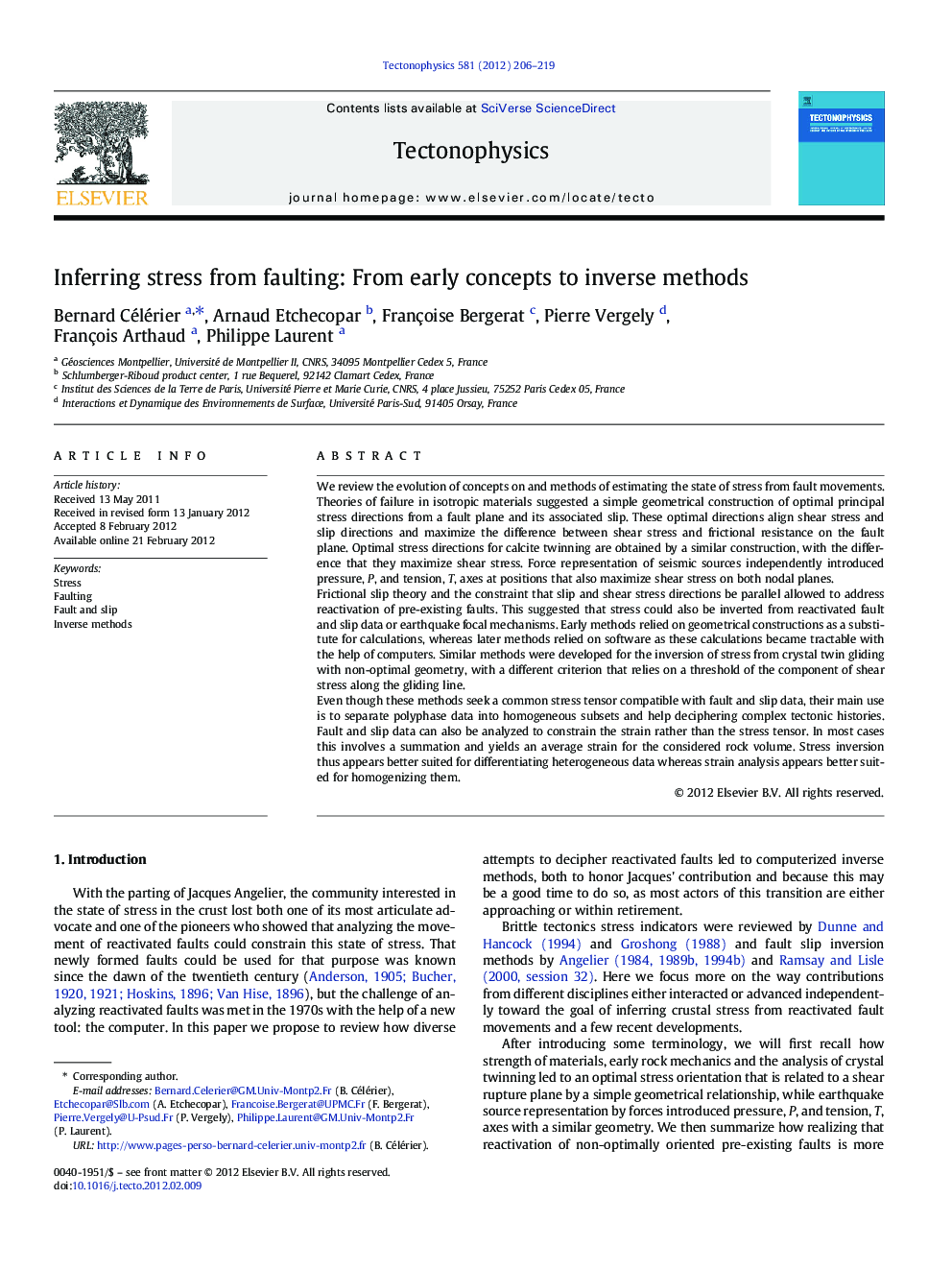| کد مقاله | کد نشریه | سال انتشار | مقاله انگلیسی | نسخه تمام متن |
|---|---|---|---|---|
| 4692600 | 1636804 | 2012 | 14 صفحه PDF | دانلود رایگان |

We review the evolution of concepts on and methods of estimating the state of stress from fault movements. Theories of failure in isotropic materials suggested a simple geometrical construction of optimal principal stress directions from a fault plane and its associated slip. These optimal directions align shear stress and slip directions and maximize the difference between shear stress and frictional resistance on the fault plane. Optimal stress directions for calcite twinning are obtained by a similar construction, with the difference that they maximize shear stress. Force representation of seismic sources independently introduced pressure, P, and tension, T, axes at positions that also maximize shear stress on both nodal planes.Frictional slip theory and the constraint that slip and shear stress directions be parallel allowed to address reactivation of pre-existing faults. This suggested that stress could also be inverted from reactivated fault and slip data or earthquake focal mechanisms. Early methods relied on geometrical constructions as a substitute for calculations, whereas later methods relied on software as these calculations became tractable with the help of computers. Similar methods were developed for the inversion of stress from crystal twin gliding with non-optimal geometry, with a different criterion that relies on a threshold of the component of shear stress along the gliding line.Even though these methods seek a common stress tensor compatible with fault and slip data, their main use is to separate polyphase data into homogeneous subsets and help deciphering complex tectonic histories. Fault and slip data can also be analyzed to constrain the strain rather than the stress tensor. In most cases this involves a summation and yields an average strain for the considered rock volume. Stress inversion thus appears better suited for differentiating heterogeneous data whereas strain analysis appears better suited for homogenizing them.
► We review the development of methods to constrain stress from slip on faults.
► Contributions come from structural geology, seismology and crystallography.
► The shared goal is to define spatial or temporal variations of the stress field.
Journal: Tectonophysics - Volume 581, 18 December 2012, Pages 206–219